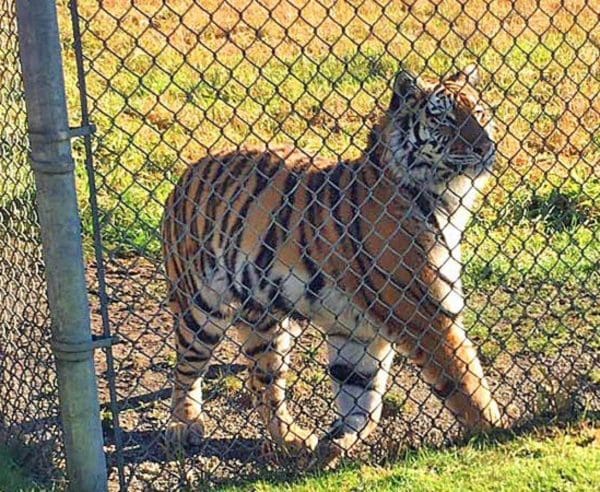Article originally published in the Georgia Straight.
To watch the Siberian tiger at the Greater Vancouver Zoo pace back and forth along the fence of her enclosure is to witness to one of the most common experiences of zoo animals: boredom.
The pacing is recognized by animal behaviourists as a “stereotypy”, which has been described as a functionless behaviour pattern that “captive animals may develop as a response to physical restraint, lack of stimulation, or inescapable fear or frustration.”
Giraffes at the zoo can also been seen exhibiting stereotypic behaviour. In their case it’s chewing and licking metal bars, likely indicating frustration with not being able to forage naturally.
The central problem here is obvious: it’s captivity. While some animals adapt to it better than others, a walk around the zoo will find many animals looking lethargic, sometimes motionless, as they languish in enclosures with little to do and nowhere to go.
While ending animal captivity is the only real answer to the problem, giving the animals more space and something to do would at least alleviate some of the tedium they endure. But according to a new report, the Greater Vancouver Zoo is even failing to do that adequately.
The report, commissioned by the Vancouver Humane Society (VHS) from researchers at Zoocheck, argues that the zoo hasn’t invested enough in behavioural or environmental enrichment for the animals—a problem identified by the two groups in previous reports in 2003 and 2008. Enrichment involves providing challenging and stimulating activities, environments, and objects for zoo animals. It can include habitat design, increased food variety, and foraging opportunities.
The report also found that a number of the zoo’s animal exhibits don’t provide enough space. Reptiles are kept in small terrariums, with no ability to engage in natural roaming behaviours. Several birds, including owls and hawks, are in undersized cages, denying them little or no opportunity to fly.
Recommendations in the report include developing a comprehensive enrichment program; increasing the size of enclosures; and moving animals to other facilities if they are not suited to the Lower Mainland’s climate or if the zoo cannot satisfy their physical, psychological, and social needs.
Such measures would improve the welfare of the zoo’s animals but the complexity of their natural habitats—which they have evolved to thrive in—can never be adequately replicated. The question remains: how can we justify holding animals captive when it compromises their welfare?
Zoos argue that they are all about conservation and education. Indeed, the Greater Vancouver Zoo participates in conservation projects involving butterflies, frogs and turtles, but the vast majority of its animals are there for show. They will never be returned to the wild.
There is little evidence to show that zoos have educational value. Damian Aspinall, the owner of two U.K. wildlife parks, estimates that 99 percent of visitors who come to his parks come for an enjoyable day out, but just one percent get newly enthusiastic about conservation. He has called for zoos, including his own, to be phased out in the next two decades.
The Greater Vancouver Zoo needs to fundamentally change direction. It can start by alleviating the crushing boredom so many of its animals endure. A comprehensive program of behavioural and environmental enrichment will help.
In the longer term, the zoo should move toward being a sanctuary for native species and abandon its current model, one that condemns animals to a lifetime of captivity just to provide humans with a day out.

